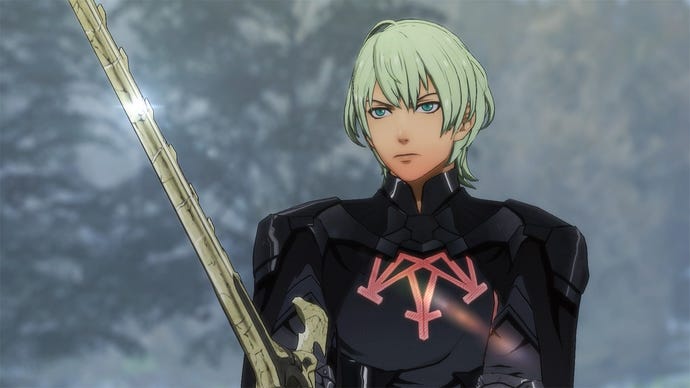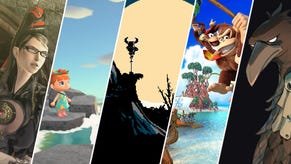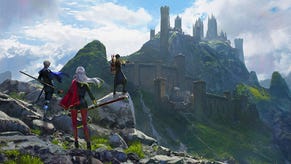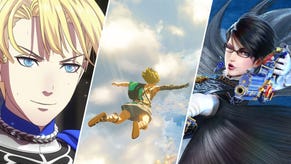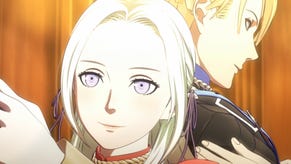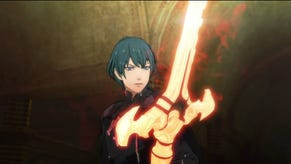Fire Emblem: Three Houses Drops the Iconic Weapon Triangle. Here’s What That Means for the Gameplay
We go hands-on with much-anticipated Switch version of the classic tactics series.
This article first appeared on USgamer, a partner publication of VG247. Some content, such as this article, has been migrated to VG247 for posterity after USgamer's closure - but it has not been edited or further vetted by the VG247 team.
Fire Emblem: Three Houses is only a handful of weeks away, but there's a lot left to dive into surrounding both its combat and the twist its adding with a school-life management sim backdrop. We went hands-on today at E3 2019 to see what Fire Emblem fans can expect. While the song remains the same, what's on the periphery has exponentially grown.
The story follows a customizable avatar [Update: Only Byleth's gender can be customized, Nintendo clarified] who, through story twists and turns, becomes a professor at the Officer's Academy of Fodlan. Though the game starts in a school, where you lecture and educate the future warlords of Fodlan, Nintendo says there will be a jump later on and shown in today's Nintendo Direct. It will be five years later, and war will have broken out among the houses. Depending on which house you chose, the story will change, and you may have to put friends to the blade when it all ends.
It sounds similar to Fire Emblem Fates, but rather than different versions of a story, Three Houses is one path with three different branches. It's subtle, but it helps that Fire Emblem: Three Houses is one package, rather than three cards like Fates. For the most part, Fire Emblem: Three Houses will feel familiar, even if there are some major changes to the game's underlying systems.
Fire Emblem’s Weapon Triangle is Gone
The most jarring change is that the weapon triangle is essentially gone. There are still swords, axes, and lances, as well as tomes, bows, and a new weapon in gauntlets. Each can still have contextual strengths, like bows being particularly powerful against flying units and lances against cavalry. But the broad rock-paper-scissors triangle is gone, instead replaced by a deeper Combat Arts system.
While a sword won't naturally beat an axe, teaching a character the Axebreaker combat art will give them an edge in battle. These arts are powerful moves and abilities that can go above and beyond the average attack, but cost additional weapon durability. There is the tradeoff: do you want to hit an enemy with everything you've got now, knowing an attack three turns later might break your lance and leave you without a weapon?
You develop these arts, as well as each character's proficiency, talents, and support relationships in the school-life sessions. While Fire Emblem has typically been broken into chapters centered around key battles in the past, Three Houses' chapters are much larger in scope. A single chapter will be a calendar month, where you spend the week instructing the students of your chosen house and training them for combat.
In this section, Fire Emblem: Three Houses starts to look a lot like a management sim. Characters will only learn if they're motivated, so to get their spirits up, you'll need to participate in activities or share meals with them. Quests encourage you to explore and get to know various students and faculty; at one point, the Nintendo rep running the demo found an art book on the ground, accidentally dropped by an enthusiast. If I knew who among the students enjoyed fine art, I might be able to return it and strengthen my bond with them.
While different characters have different natural affinities where they will learn faster, anyone can learn any school of combat. In fact, some might even approach you to suggest a class or course change. But it takes more than a few lectures to wield a sword in combat; to become a new class, a character has to pass a certificate exam, which will succeed or fail based on their proficiency in the area. Once you've unlocked it, you can switch units over to their new class, and their appearance will even change to match.
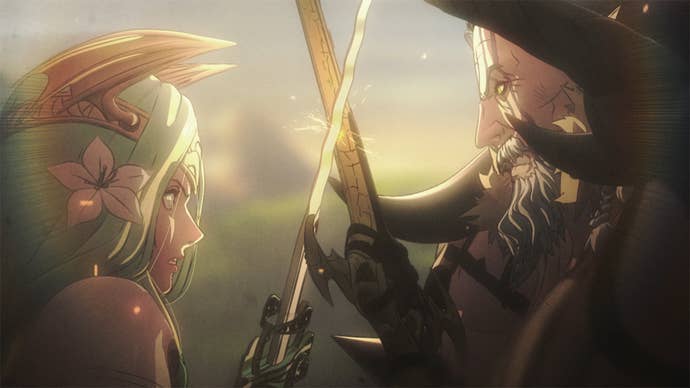
On Sundays, the character player—a newly appointed professor at the Officer's Academy—can take a free action. Sometimes this means exploring the academy grounds, talking to students and raising motivation, completing the aforementioned quests. The school grounds contain a lot of side activities, from the Amiibo gazebo (yes, it is called that) to cats and dogs (I asked, and in the current build, you cannot pet them). Or you could hold an additional lecture, or rest to raise the motivation of your army. There are also battles, which can either be simple fights for treasure and experience, to lead-ins that set up the big battle at the end of every chapter and month. If you're indecisive, that's okay, as the game will notify you when a prologue battle is available and global player percentages will tell you what others have done in your shoes.
Still Extremely Fire Emblem
Once you head out into battle, the base game is extremely Fire Emblem, and Three Houses mostly retains the core elements you'd be looking for. While the weapon triangle is no more, you still have the grid, combat forecasts, and units to move around and smash into each other. There's even an option to skip all the instructing and school-life stuff, if you're so inclined. (I have no idea why you would.)
You can view battles in either the classic view, or zoom in for an on-the-ground view, where you manually run across grid squares and can see the battalions accompanying each unit. Rather than a single fighter, each character commands a batch of forces called a "battalion." These are not limited to your character's class or weapons, and can be used to either augment or supplement their abilities. An archer who's always pestered by speedy cavalry units can have a lance battalion, warding off any bold riders. My personal favorite was a batch of gauntlet-wiedling hype men, whose Gambit—a special ability unique to each character's battalion—was to cheer on our forces, giving them further range to move.
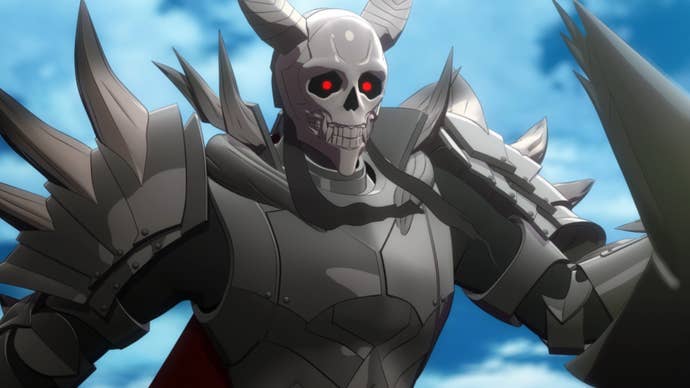
In the hands-on bit I played, I took on two forces: a local bandit camp and a demonic beast, a hulking dragon-like creature called the King of All Beasts. He was huge, taking up four squares of the grid, and he had multiple lifebars, denoted by red crystals next to his regular life. The King could attack an area, laying waste to any unit in it, and most of my battle was spent just trying to deal with two fronts. It was chaotic, but this is where all the management work paid off. Having a solid relationship between units allowed them to team up for Gambit Boosts, turning their normally effective Gambit attacks into potent forces of destruction. I routed the beast (though my demo ended before I could finish dealing with the bandits), and it felt like taking down a massive boss rather than another lineup of faceless sword guys.
Fire Emblem: Three Houses is a massive undertaking. As Nintendo reiterated, it's the first HD Fire Emblem, and the series has been absent from consoles for a long time as well. In bringing the war to Switch, the drama and scale is amplified. You can interact with characters more, explore the world in a greater capacity, and battles take on a grander scale. Three Houses seems like Fire Emblem, but a lot more of it. Even if some old fans don't like some of the directions it's taking, Fire Emblem: Three Houses seems like it's forging ahead confidently either way. It’s out July 26 on Switch.
